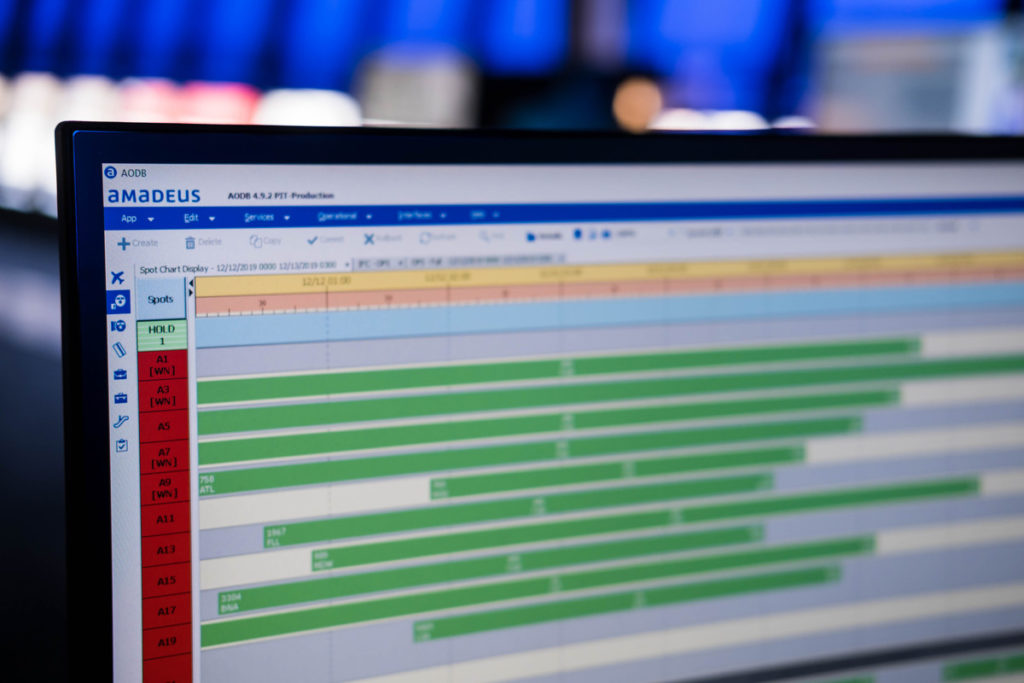Why Did My Gate Just Change?
Airport staff juggle delays, diversions, other changes to get planes in, passengers out
By Jesse Geleynse
Published December 16, 2019
Read Time: 4 mins
You arrived at the airport with ample time to spare, braved security and nestled into a seat in the waiting area of your departure gate, phone in one hand and Cinnabon in the other.
Fifteen minutes later, with no apparent explanation, the announcement comes. Your flight will now be departing from a different gate. If you’re not paying attention, you might at least notice that all the people in your group are gathering up their bags and heading down the concourse.
What just happened?
“There is a lot of behind-the-scenes coordination going on, with airlines doing (things) internally and coordinating with the airport,” said Patrick Carreno, Vice President of Airport Operations at Pittsburgh International Airport. “As a passenger, you might see it as, ‘OK, they moved me down to here, why are they doing that?’ Well, they’re doing it for numerous reasons.”
Unexpected gate changes are more the exception than the rule, but they do happen. The usual culprits, such as mechanical problems or late arrivals, can force airport operations to shift things around. Throw in some unpredictable weather, and you may be carrying that cinnamon roll a bit longer than you planned.
Delays and diversions
Airports operate two different kinds of gates. Some are leased directly by the airlines, giving them exclusive access. Other gates, designated “common use,” can be used by any airline as they become available.
At PIT, about 40 percent of the gates are leased and 60 percent are common use.
“(Airlines with) leased gates can schedule to fit their needs,” Carreno said. “(Airlines) try to maximize that space, try to put as many flights as they can throughout the day on those gates. And when they need additional space, they’ll take on common use gates.”

An airport operations monitor at Pittsburgh International Airport displays gate scheduling information for the terminal. (Photo by Beth Hollerich)
PIT’s Operations team uses the Amadeus Airport Operational Database to help manage gates. The program knows which aircraft can fit at what gates, and can schedule gates several days in advance.
“(The gate operations staff has) a really good picture of what’s being utilized throughout the day,” Carreno said. “The system gives them a graphical display and they can pretty easily plug pieces in … A lot of it is automated for them so they can make quick decisions.”
At Norman Mineta San Jose International Airport in San Jose, Calif., a top 50 airport like Pittsburgh that also uses the Amadeus system, only seven of the 36 gates are available for common use. Southwest Airlines, the airport’s largest carrier, leases 14 of San Jose’s gates.
SJC serves a significant number of business travelers, said Michael Glazer, the airport’s superintendent of terminal operations. His team tries to stay two to three hours ahead of incoming flights, using Amadeus to “see what’s happening in the future, not necessarily what’s on the ground now.”
Bad weather can cause delays and diversions that force operations staff to make quick gate changes, even if everything is sunny and clear outside their windows.

PIT airport operations duty manager Marc Buranovsky looks over flight data. (Photo by Beth Hollerich)
Inclement weather in the Northeast can mean busy, chaotic days for airport operations staff, as planes headed to major hubs like New York or Washington, D.C., sometimes divert to Pittsburgh. The staff uses Amadeus to determine where to park those unexpected planes before they refuel and continue on to their original destinations.
“It’s kind of like an orchestra,” Carreno said. “It’s pretty straight-forward on normal days, (but) it gets interesting when there is weather in the Northeast causing flight delays and things like that. That’s where we’re getting airplanes that we weren’t expecting. They have to move pieces around to make that work.”
San Jose boasts more than 300 days of sunshine per year, but San Francisco and Oakland, each less than 40 miles to the north, are closer to the Pacific Ocean and deal with far more fog and rain. Consequently, flights headed to those airports frequently divert to San Jose when weather conditions are poor in the northern Bay Area.
“It happens very quickly where we didn’t see it coming,” Glazer said. “It looks like it’s going to San Francisco, then all of a sudden it [descends] 10,000 feet and ‘poof,’ it’s here.”
Watch
This Next
Read
This Next





